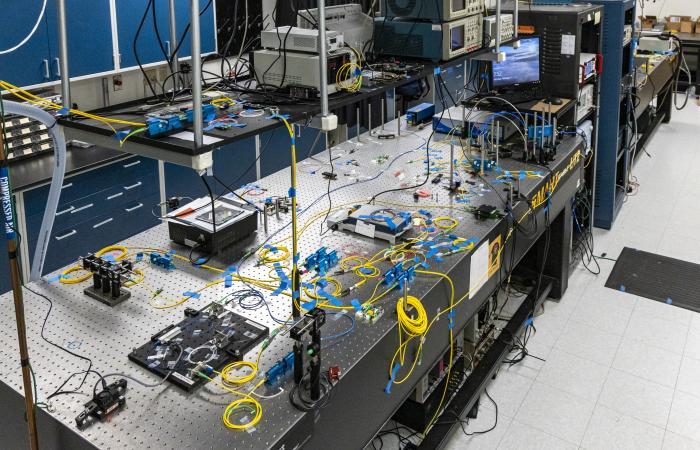Oak Ridge National Laboratory (ORNL) scientists have spent the past 20 years studying quantum photonic entanglement, which uses quantum mechanics to pair particles of light, or photons, then employs those particles to encode and deliver information across long distances. Their partnership with colleagues at Los Alamos National Laboratory (LANL) and private industry partner Qubitekk led to development of the nation's first industry-led commercial quantum network. This type of network could ultimately help secure the nation's power grid and other infrastructure from cyberattacks.
"This technology allows us to take full advantage of quantum resources being developed all over the U.S.," said Nick Peters, head of ORNL's Quantum Information Science Section.
The effort began when the city of Chattanooga's Electric Power Board, or EPB, which provides power and data services to approximately 120,000 customers, approached ORNL in search of ways to make the local power grid more reliable and secure. The request gave ORNL and LANL researchers an opportunity to collaborate with Qubitekk and experiment with quantum-based secret keys on an isolated part of EPB's fiber-optic network.
Quantum computing uses quantum bits, or qubits, to store information. Qubits don't work the same way as the bits in classical computers - the types of computers we rely on today. Classical bits store information as one of two potential values - 0 or 1 - per bit, similar to a light switch that flicks on or off. Qubits store information using quantum superposition, which allows a combination of potential values to be stored on a single qubit, more like a dial with a range of settings than a switch.

"The goal is basically to enable us to do what we can't by any other means," Peters said. "That includes building larger telescopes that can see across greater distances and distributing quantum computers that can communicate across more secure networks."
The EPB effort employed quantum key distribution systems that use photons and quantum superposition to verify data and generate secret keys used to encrypt messages. One quantum system can transmit that key to another via a quantum node that's impervious to most cyberattacks.






